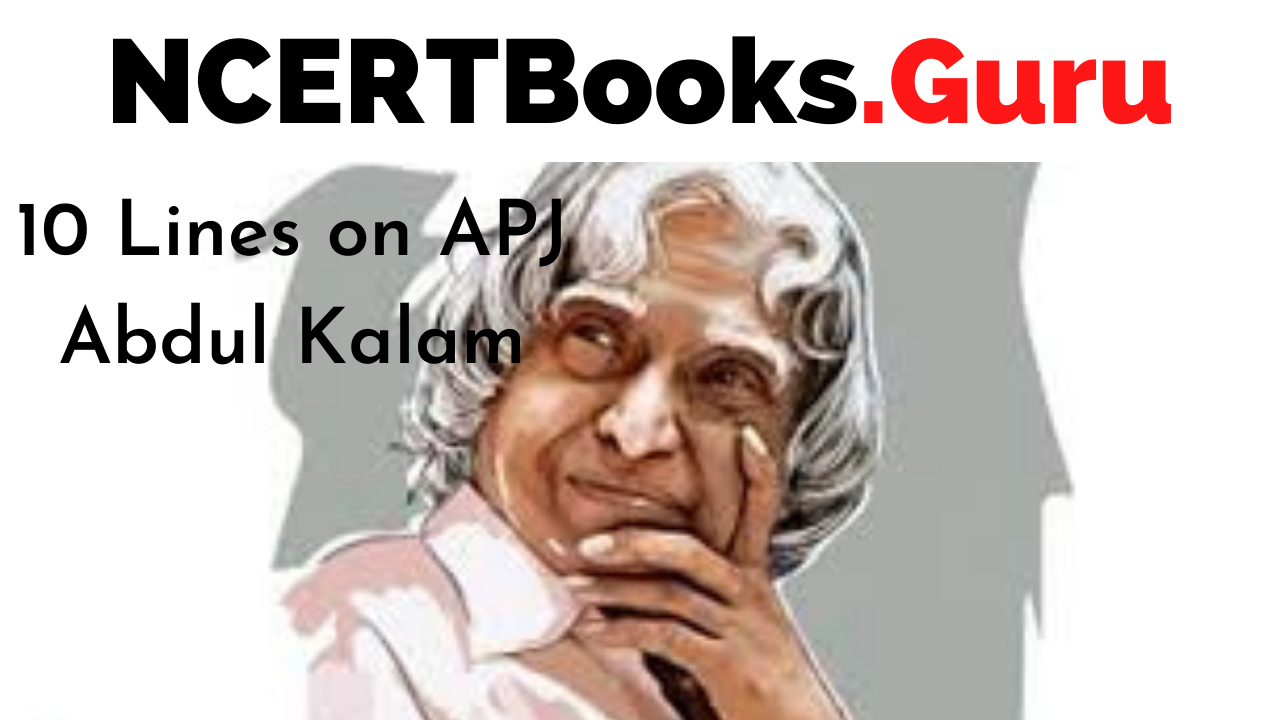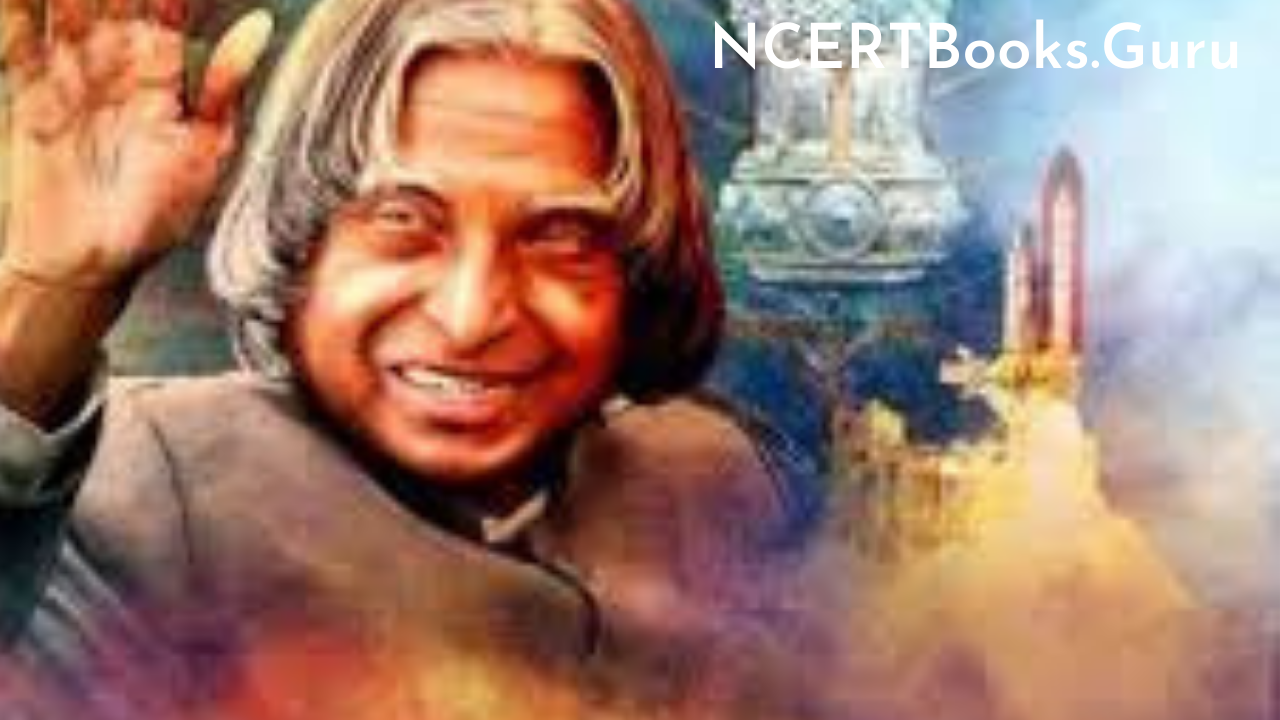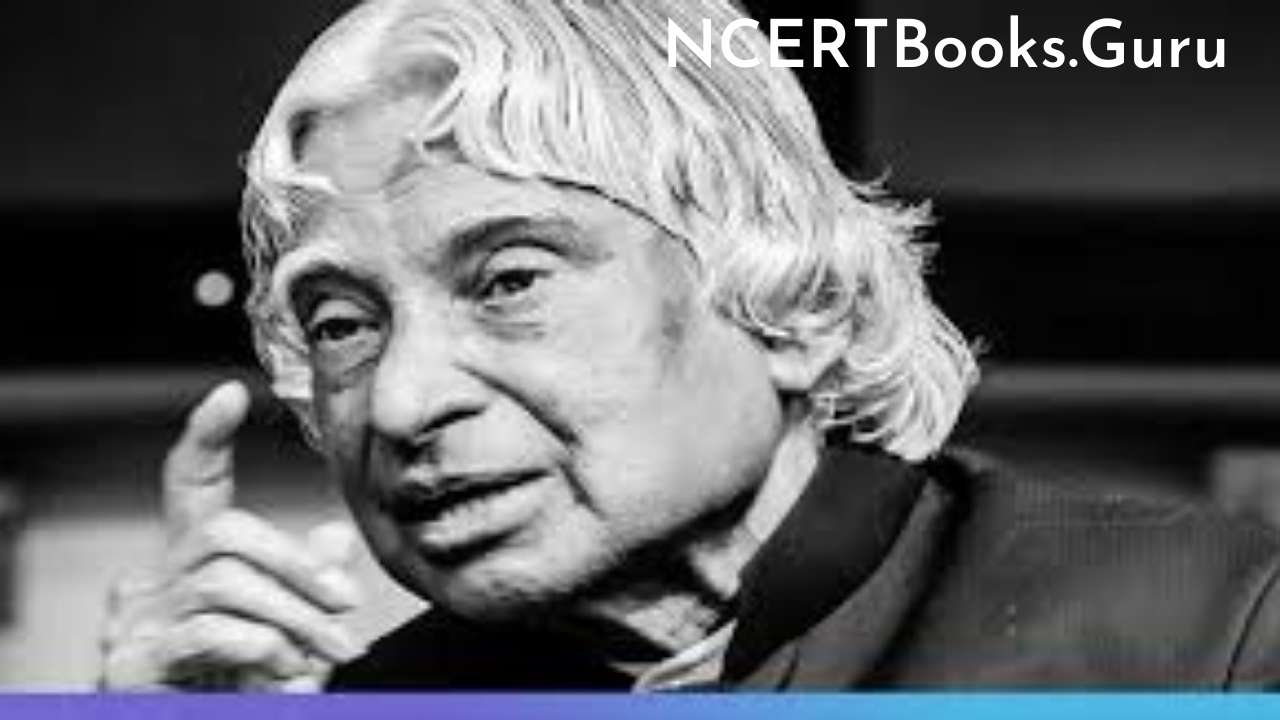10 Lines on APJ Abdul Kalam: APJ Abdul Kalam’s full name was Avul Pakir Nainulabdeen Abdul Kalam, and he was the 11th President of the Republic of India. He was in power for a period of 5 years, from the years 2002 to 2007, and was elected by NDA with support from its opposition parties as well. Being elected as President by a largely Hindutva ideological party despite being a Muslim speaks volumes to how influential he was.
Even before his presidency, Kalam was an important asset to the government of India for his contributions to the Defense Research and Development Organisation (DRDO), where he was the scientific adviser of the defence minister of India. He is also known for contributing in research to the Indian Space Research Organisation (ISRO).
For his contributions to the Indian defence ministry, Kalam won the title of “Missile Man” and also won several awards in the international as well as Indian spheres, such as the Padma Vibhushan and Bharat Ratna awards. Let us take a look at a few sets of 10 lines on APJ Abdul Kalam for all age groups which will help us to write essays and long paragraphs about the scientist and politician, and will also help us to improve our general knowledge.
Enhance your vocabulary and writing skills with 10 Lines Essays available. Spark up the creativity in you and access various Topics on 10 Lines all in one place.
Set 1 – 10 lines on APJ Abdul Kalam for kids
This set of 10 lines on APJ Abdul Kalam for junior school will be helpful for children who are students of classes 1, 2, 3, 4 and 5.
- APJ Abdul Kalam is the most well-known for being the 11th President of India from the years 2002 to 2007.
- He was also the scientific advisor for the defence minister of India from 1992 to 1997.
- APJ Abdul Kalam earned his degree in aeronautical engineering, which is the building of aeroplanes from Madras Institute of Technology.
- After he got his degree, Kalam joined the DRDO, an organisation which researches defence in the country.
- Kalam helped to create several missiles while he was in the DRDO, which gave him the nickname “Missile Man”
- Kalam also joined ISRO, which is an organisation that researches space.
- At ISRO, Kalam helped the government build a machine called SLV-III, which is a machine used to launch a satellite into space.
- APJ Abdul Kalam created a plan called Technology Vision 2020 in the year 1998 to help bring development to India by the year 2020 through technology.
- APJ Abdul Kalam won the Padma Vibhushan award in the year 1990, the Bharat Ratna award in 1997 and also many international awards.
- APJ Abdul Kalam has also written many books, including Wings of Fire (his autobiography), I Am Kalam, etc.
Set 2 – 10 Lines on APJ Abdul Kalam for School Children
This set of 10 lines on APJ Abdul Kalam should be useful for students in middle school in classes 6, 7, 8 and 9.
- APJ Abdul Kalam was the 11th President of India and he was in power from 2002 to 2007 from the NDA Hindutva government.
- While he was President, Kalam focused on technology to advance the level of development in the country and devised the Technology Vision 2020 plan for the development of India.
- Kalam was born in Rameshwaram, on October 15th 1931 and he passed away in Shillong on July 27th 2015.
- Kalam earned his degree in aeronautical engineering from the Madras Institute of Technology in the late 1950s.
- After attaining his engineering degree, Kalam joined the Defense Research and Development Organisation in 1958, which he left and joined back in 1982.
- When Kalam rejoined the DRDO, he became the scientific advisor to the defence minister, and he also became principal defence minister later on.
- Kalam made significant contributions to the engineering and creation of missiles in the country while being the scientific advisor, earning himself the nickname “Missile Man”
- Before rejoining the DRDO, Kalam joined ISRO (Indian Space Research Organisation) and helped in the creation of the SLV-III, a satellite launch vehicle designed in India for the first time.
- Kalam won several awards for his work in the DRDO as well as the ISRO, including some of India’s highest awards like the Padma Vibhushan in 1990 and the Bharat Ratna in 1997.
- Kalam has written several famous books, including his autobiography, Wings of Fire.
Set 3 – 10 Lines on APJ Abdul Kalam for Higher Class Students
The following set of 10 lines on APJ Abdul Kalam for senior school is suitable for students in classes 10, 11 and 12.
- APJ Abdul Kalam was born on 15th October 1931 in Rameshwaram and died on 27th July 2015 while in Shillong.
- APJ Abdul Kalam made significant contributions in the defence industry of India during his time spent at the DRDO (Defence Research and Development Organisation) in the area of nuclear weapons such as missiles, thus earning him the nickname of “Missile Man”
- APJ Abdul Kalam was on the team of people who designed and built India’s first satellite vehicle launcher, the SLV-III.
- APJ Abdul Kalam acted as a scientific advisor through the years 1992 to 1997 to the defence minister, and later as the principal scientific advisor through the years 1998 to 2001.
- In the year 1998, APJ Abdul Kalam played a prominent role in the testing of nuclear weapons in India, which made him a hero in the eyes of the nation.
- In the year 2002, APJ Abdul Kalam became the 11th President of India and served as the same through the years 2002 to 2007.
- Kalam was elected as President by the NDA Hindutva alliance despite his religious identity, and also had the support of its opposition parties such as the Indian National Congress, which speaks volumes to how influential he was.
- APJ Abdul Kalam believed in advancing the country through means of technology and he emphasised upon this in his Technology Vision 2020 plan to increase productivity in agriculture, for increasing economic growth and also using technology to better the medical and educational infrastructure for the country.
- APJ Abdul Kalam authored several inspirational books, one of which was his autobiography titled “Wings of Fire” and also “India 2020: A Vision for the New Millennium” emphasizing his Technology Vision 2020 plan of 1998.
- APJ Abdul Kalam has received a high amount of international recognition and has also received Indian awards of the highest statures, such as the Padma Vibhushan in 1990 and the Bharat Ratna award in 1997.
Frequently Asked Questions on APJ Abdul Kalam
Question 1.
Which organisations was APJ Abdul Kalam associated with?
Answer:
APJ Abdul Kalam was associated with the following organisations:
- Madras Institute of Technology, from where he graduated with a degree in aeronautical engineering.
- Defence Research and Development Organisation (DRDO) where he made significant contributions to India’s defence sector.
- Indian Space Research Organisation (ISRO) where he was part of the team which designed the SLV-III.
- National Democratic Alliance (NDA) was his political affiliation when he became President of India.
Question 2.
Why was APJ Abdul Kalam known as “Missile Man”?
Answer:
APJ Abdul Kalam was nicknamed the “Missile Man” because of his contribution to the development of missiles (nuclear weapons) in India and also for carrying out nuclear weapon testing in 1998 in India.
Question 3.
Which awards did APJ Abdul Kalam win?
Answer:
APJ Abdul Kalam won several Indian as well as international awards:
- Padma Bhushan in 1981
- Padma Vibhushan in 1990
- Bharat Ratna in 1997
- Indira Gandhi Award for National Integration in 1997
- Ramanujan Prize in 2000
- King Charles II Medal in 2007
- International von Karman Wings Award in 2009
- Hoover Medal in 2009
- IEEE Honorary Membership in 2011
- Von Braun Award in 2013
Question 4.
What is Technology Vision 2020?
Answer:
Technology Vision 2020 was a plan devised by APJ Abdul Kalam in the year 1998 to make India, a developing economy, a developed nation by the year 2020. He focused on the importance of technology in bringing development to India, such as in the agriculture sector, economic growth, and for getting better infrastructure.


